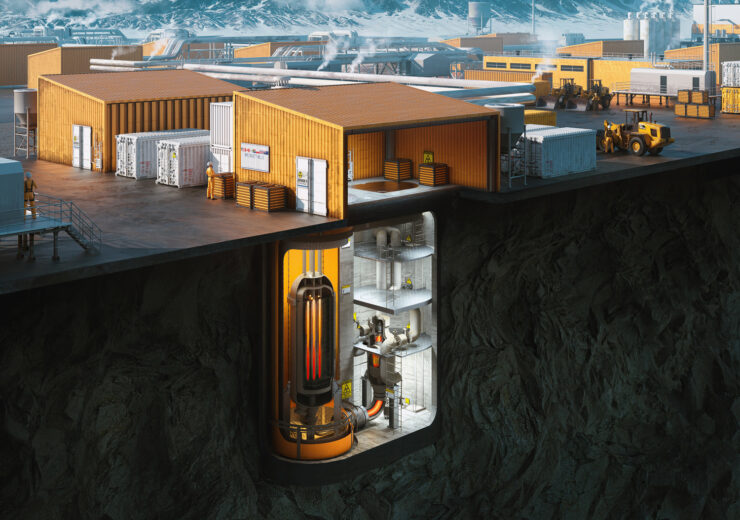Japan’s experience with the Fukushima Daiichi Nuclear Power Plant catastrophe in 2011 has haunted the country’s aspirations to rapidly scale up nuclear power for non-carbon emitting energy.
However, Japan is now looking to be moving ahead to leverage a new technological approach to satisfy the country’s future energy needs.
Japan’s Mitsubishi Heavy Industries intends to build and commercialize nuclear reactors small enough to be transported on trucks by the end of the decade, to capitalize on the demand for non-carbon emitting energy, Nikkei Asia reported.
The microreactors, which will be 3 meters tall and 4 meters wide, will weigh less than 40 tons. The reactor and power generation equipment will nestle inside a container truck, making it possible to transport it to remote or disaster-stricken locations.
The microreactors’ maximum output will be 500 kilowatts or one-twentieth of the capacity of normal nuclear reactors that generate more than one gigawatt. According to the report, each microreactor will require tens of millions of dollars, significantly less than the $6 billion or more than a 1.2-gigawatt nuclear facility would need.

The cost of producing one kilowatt-hour will be higher than that of a conventional reactor, but it will be comparable to the cost of providing power to isolated islands now. Remote places will be able to obtain a cost-effective, carbon-free source of energy owing to these microreactors.
The business has also designed it compact enough to be buried underground to reduce the possibility of a mishap. The technology may be employed in space exploration.
Once the company secures clearance from Japan and other governments, Mitsubishi will commercialize the technology in the 2030s at the earliest. Due to their proximity to inhabited regions, microreactors will need to be made safer than traditional reactors.
The company has also taken this into account, designing the technology such that all of the nuclear reactor’s components, including the core, coolants, and other equipment, are housed in tightly sealed capsule containers.
Furthermore, highly enriched uranium will be utilized as fuel, and the reactor will not need to be replaced over its 25-year lifespan. The microreactor can be retrieved once the fuel has been used up. The reactors can be installed underground to lessen the danger of natural catastrophes and terrorism because they will only require little maintenance.
Mitsubishi Heavy will also lessen the chances of catastrophic coolant failure. The microreactors will use a solid-state graphite material that is very thermally conductive rather than liquid coolants.
During normal operation, the graphite surrounds the core and distributes heat to the power generation system. Even when an accident occurs, natural ambient cooling removes excess heat from the core.
Small Nuclear Reactors Around The World
These miniature nuclear reactors have been touted as game-changers on several levels. They’re regarded as a process to avoid the cost overruns and construction delays that beset a nuclear power sector dominated by large reactors. The microreactor is designed to generate electrical power typically up to 10 MW(e).
Though the technology has yet to be commercialized, multiple designs are progressing through licensing in North America and Europe, with demonstrations scheduled in the next few years.
Oklo, For example, a US-based company, submitted a license application in March 2020 to design and operate a microreactor, with the first reactor expected to start up at Idaho National Laboratory by 2025.
The US-based companies Westinghouse (0.2-5 MWe), NuScale (1-10 MWe), and UltraSafe Nuclear (5 MWe) are all building reactors with a power output of fewer than 10 MWe, while Sweden’s LeadCold (3-10 MW3) and a UK consortium lead by Urenco (4 MWe) are also developing on comparable systems.

Furthermore, the US Defense Department recently announced plans to Build a Miniature Nuclear Reactor. The Defense Department will develop a 1-5 MegaWatt nuclear microreactor at Idaho National Laboratory for a three-year (minimum) test period under the new initiative.
It will be “the first electricity-generating Generation IV nuclear reactor built in the United States,” the statement said.
However, critics frequently point out that US foes could target microreactors, notably during their shipment. “In my view, these reactors could cause more logistical problems and risks to troops and property than they would solve problems,” Edwin Lyman, director of the nonprofit Nuclear Power Safety at the Union of Concerned Scientists, told the Associated Press.
“And unless the Army is willing to spend what it would take to make them safe for use, especially in potential combat situations or foreign operating bases, then I think it’s probably unwise to deploy nuclear reactors in theaters of war without providing the protection they would need.”
However, these emerging technologies will undoubtedly influence the future of many countries’ energy requirements. Microreactors will most likely study think to be shown first in remote parts of high-income nations such as the United States or Canada, but if the technology gets proven, energy-poor emerging economies will be the most potential markets for development.
- Contact the author at ashishmichel@gmail.com
- Follow EurAsian Times on Google News




